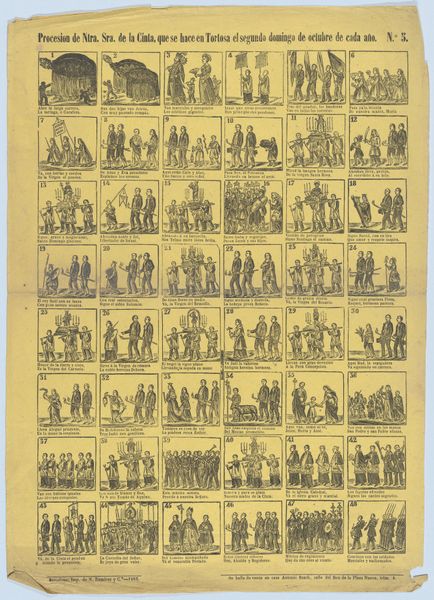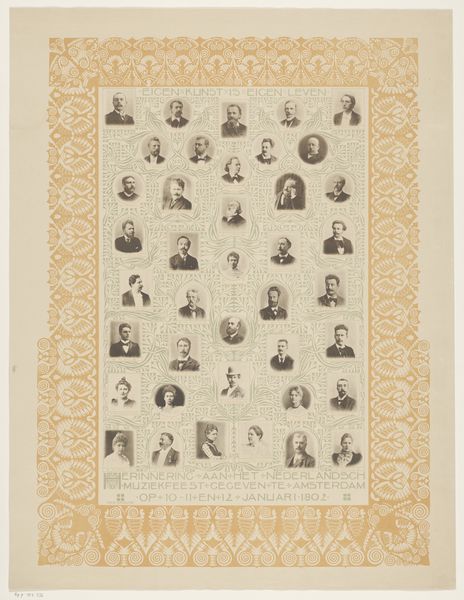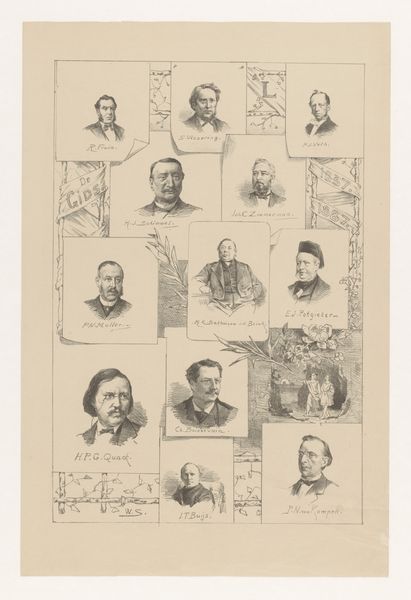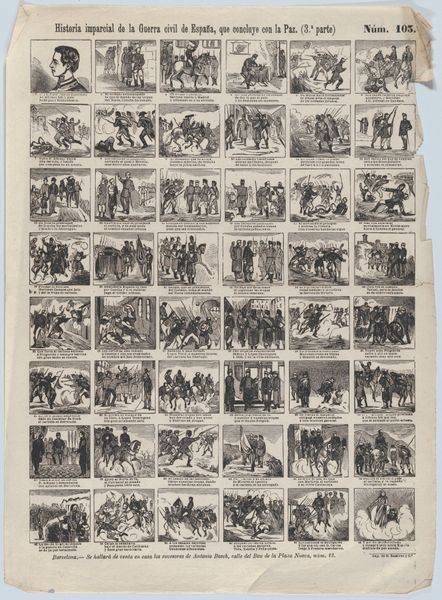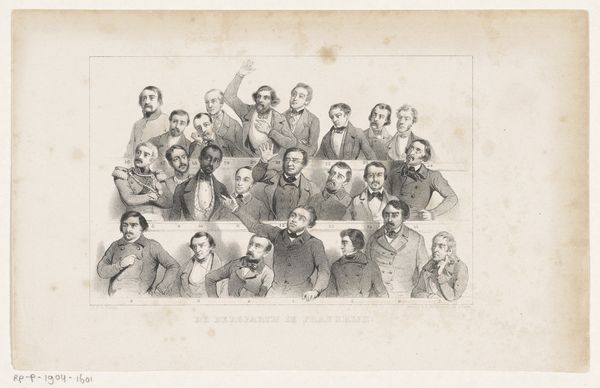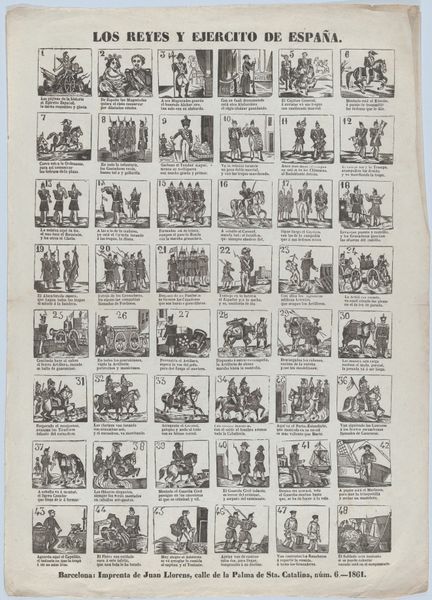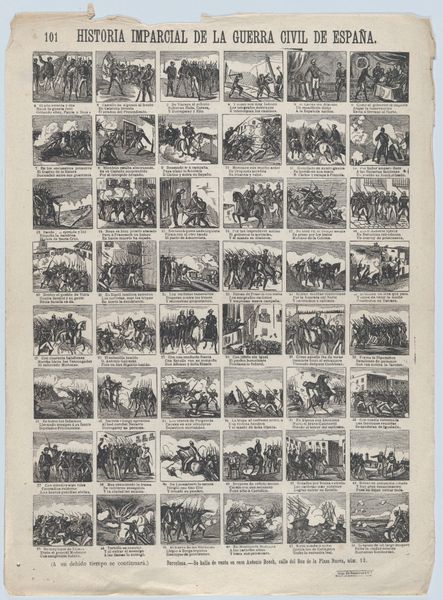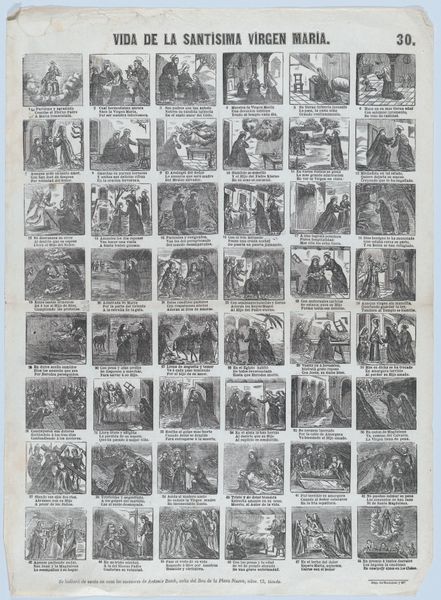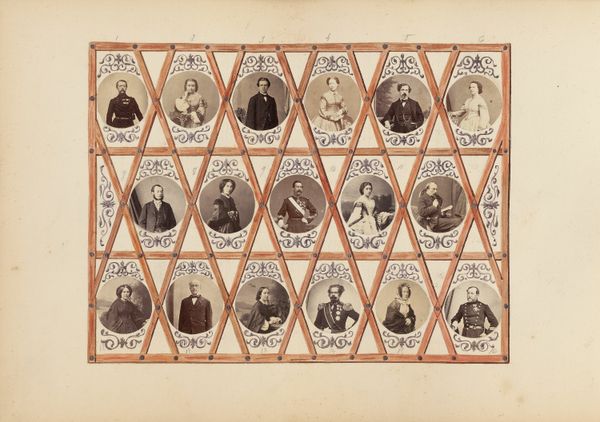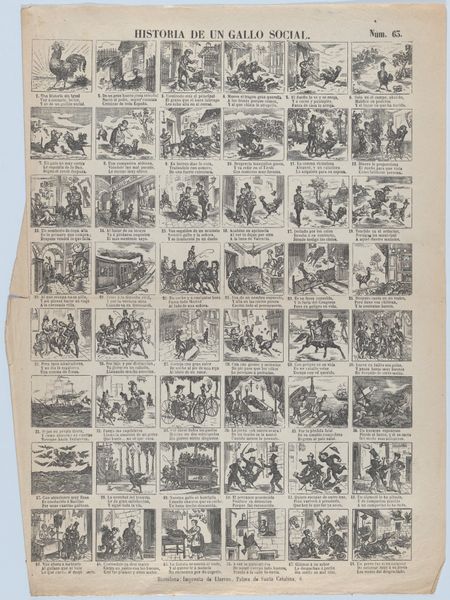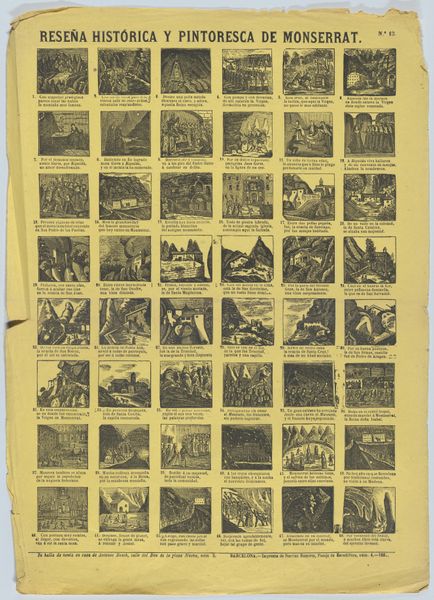
Broadside with 48 scenes telling the 'impartial' story of the civil war in Spain (Part 2) 1855 - 1865
0:00
0:00
Dimensions: Sheet: 17 5/16 × 12 5/8 in. (44 × 32 cm)
Copyright: Public Domain
Curator: The "Broadside with 48 scenes telling the 'impartial' story of the civil war in Spain (Part 2)," dating from 1855 to 1865, is a dense visual record. It appears to be a mass-produced print, possibly an engraving. What strikes you most about this piece? Editor: It's overwhelming! The sheer number of images crammed onto the page, the portraits followed by these scenes of conflict… it feels very deliberately documentary in style. What am I meant to take away from it all? Curator: Precisely! Think about the means of production: an inexpensive print, intended for wide circulation. Consider its social function. How does the mass production of images, particularly during a time of conflict, shape public opinion and even become a weapon? What kind of labor and means do you imagine would've been invested in its creation? Editor: So, you're suggesting that even the act of creating and distributing this "impartial" history is itself a political act? And that the choice of the print medium itself reinforces the propaganda aspect? Curator: Exactly. The use of a broadside implies a desire to reach a wide audience, bypassing traditional institutions of art and power. Who had access to these prints? How were they consumed? The materials and their distribution are crucial to understanding its impact. Editor: It’s easy to overlook the significance of something like a print, but considering its place within a wider social and economic system is very helpful. Now I can see it as not just an image of the war but an active part of the war itself, from the point of view of production and labor behind it, as well as consumption. Curator: Precisely, focusing on such materiality opens up avenues beyond a simple interpretation of visual elements. The broadside’s story becomes enmeshed in the broader political economy of the era.
Comments
No comments
Be the first to comment and join the conversation on the ultimate creative platform.
